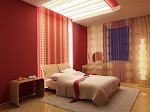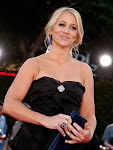Coated Fabrics: Benefits and Drawbacks
 The most significant development of our times, in the field of fabrics, can be called the development of specialty fabrics. These specialty fabrics have many characteristics that make them suitable for specific applications. Coated fabric is one of the important specialty fabrics of our times.
The most significant development of our times, in the field of fabrics, can be called the development of specialty fabrics. These specialty fabrics have many characteristics that make them suitable for specific applications. Coated fabric is one of the important specialty fabrics of our times. Many chemicals and materials such as PVC (Polyvinyl Chloride),PE and other Poly olefins, PU (Polyurethane), acrylics, rubber (natural or synthetic) and waxes are used in the coating process of fabrics. Color dyes and pigments can also be added to these chemicals for giving desired colors and shades. Through coating, many characteristics are given to the fabrics, such as water resistance, fire retardance, UV resistance, flexibility, surface gloss, surface texture, etc.
Many chemicals and materials such as PVC (Polyvinyl Chloride),PE and other Poly olefins, PU (Polyurethane), acrylics, rubber (natural or synthetic) and waxes are used in the coating process of fabrics. Color dyes and pigments can also be added to these chemicals for giving desired colors and shades. Through coating, many characteristics are given to the fabrics, such as water resistance, fire retardance, UV resistance, flexibility, surface gloss, surface texture, etc.
Different types of coated fabrics are there which include PVC coated fabrics, Teflon coated fabrics, Rubber coated fabrics, Vinyl coated fabrics and the newly developed Thermoplastic Polyolefin (TPO) coated fabrics. These coated fabrics are used for manufacturing various products including protective clothing, gaskets and seals for automotive industry, conveyor belts, bags, tents and tarpaulins, roofing membranes, sporting tents, light weight sport field covers, agriculture coverings, automotive interiors and many other such highly functional products. Although coated fabric provides high functionality to many industries, its disposal poses a threat to the environment. They can't be recycled even by applying high temperature or pressure or by dissolving in solvents. They have to be burned, of course after having taken precautions to save the environment from such disposal. However, innovations are being introduced in the field of coated fabrics also. The TPO coated PP fabrics come labeled as “PVC free”, “halide free”, “Green product” etc. They are lighter than PU or PVC or rubber coated fabrics and are melt recyclable. We can hope that in near future more such innovations take place so that the useful coated fabric also become environmental friendly.
Although coated fabric provides high functionality to many industries, its disposal poses a threat to the environment. They can't be recycled even by applying high temperature or pressure or by dissolving in solvents. They have to be burned, of course after having taken precautions to save the environment from such disposal. However, innovations are being introduced in the field of coated fabrics also. The TPO coated PP fabrics come labeled as “PVC free”, “halide free”, “Green product” etc. They are lighter than PU or PVC or rubber coated fabrics and are melt recyclable. We can hope that in near future more such innovations take place so that the useful coated fabric also become environmental friendly.
























































